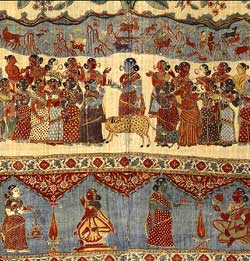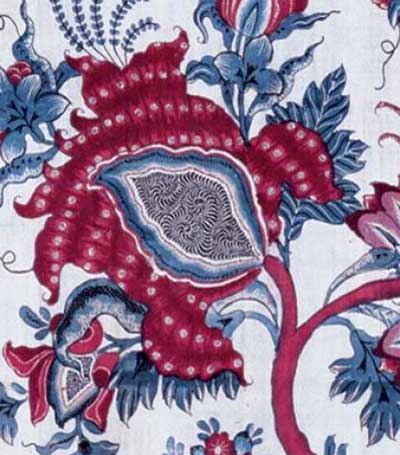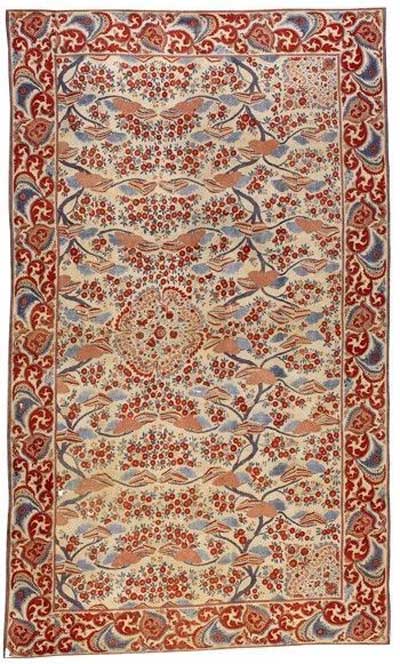Indian Chintz II
INDIAN CHINTZ DESIGN MOTIFS
The most frequents motifs were fruits, flowers, trees, birds . Inspiration come from the observation of the exhuberant vegetation and fauna in India, Java and Iran.
For instance grenada is a very common motif in chintz: grenada is a symbolic fruit meaning properity and wealth.
Chintz from Persia use often different motivs: Tigers, lions and eagles ( symbol of
strengh and power), camels, peacock ( symbol of wealth) , doves ( symbolof peace), rats and goats.
Indian textile design was influenced by other civilisations: Greece, Persia, China ( afterthe mongol's invasion in the XIII century) .

Order in chaos was the fundamental principle in design.
Repetition, alternation, expansion, synthesis were the rules.
Soon after chintz was introduced to Europe, new patterns including heraldic designs, English flowers and birds, swags were created.
Readings:
M.A. Hann: Techniques of Decoration and Coloration, The University of Leeds
Guy, John. Woven Cargoes: Indian Textiles in the East. New York: Thames & Hudson, 1998.
Roques: La manière de nègocier dans les Indes Orientales (BN Paris , Fonfs Francais 14614)
Journal of Indian textile history
Lettres du Père Jesuite Coeurdoux 1742-1748
Osumi, Tazemo. PRINTED COTTONS OF ASIA: The Romance of Trade Textiles.
Kumar, Ritu. Costumes and Textiles of Royal India. London: Christie's Books, 1999
Rosemary Crill: Chintz: Indian Textiles for the West (V&A Publishing, 2008)


Useful Links:
Places to visit
Mus?e de l'Impression sur Etoffe, Mulhouse

Indian chintz, Japanese style for the Dutch market.
18th c.
